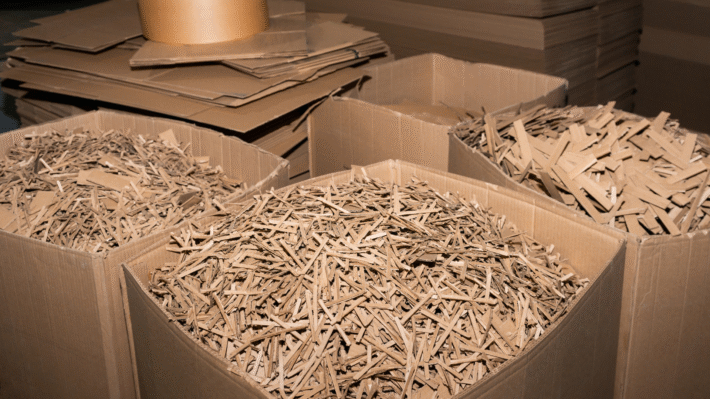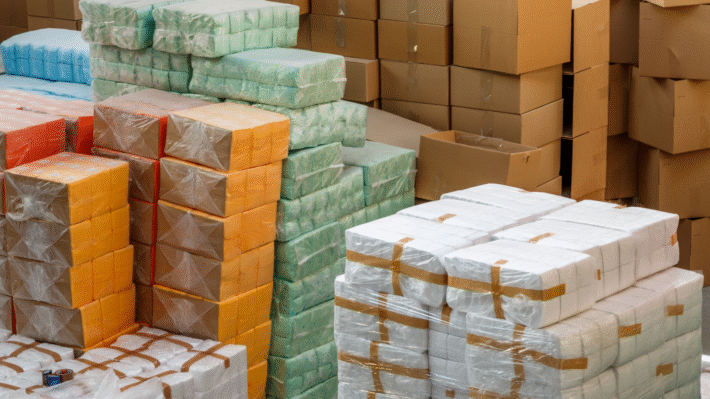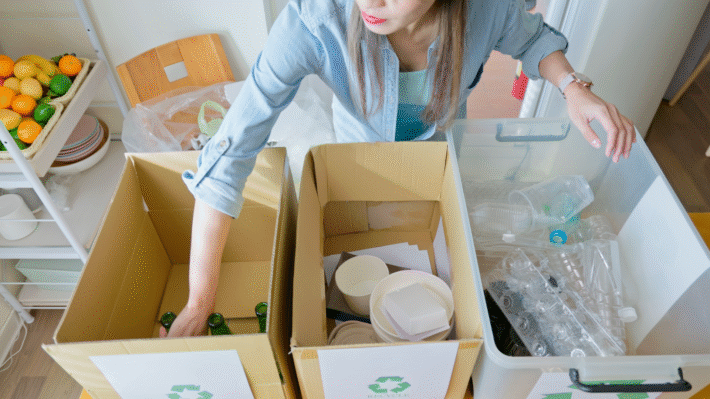Bio-Based Chemicals Driving Sustainable Innovations for a Greener Future

Bio-based chemicals have become a buzzword as the world shifts away from fossil fuels towards more sustainable solutions. These are chemicals made from renewable biological sources rather than traditional fossil fuels. This switch is driven by a growing demand for eco-friendly options that benefit both our planet and future generations.
The beauty of bio-based chemicals lies in their ability to come from nature itself—whether it’s plants, algae, or even waste materials. This article explores the sources, production methods, and varied applications of these fascinating compounds, while also peering into their promising future. As people become more conscious of their environmental impact, the transition to bio-based chemicals is sparking hope for a greener tomorrow.
Sources of Bio-based Chemicals
Let’s dive into the sources of bio-based chemicals. These special chemicals come from nature. They’re not like the ones from fossil fuels. We’ll look at four main sources.
Plant-Based Sources
Plants are a big part of our lives. They give us food, clothes, and even help us breathe. But did you know they’re also great for making chemicals?
Crops like Corn and Sugarcane
Crops like corn and sugarcane are superstars. They give us fuel, plastics, and more. When we grow these crops, they soak up sunlight and turn it into energy. This energy becomes our friend in many ways. With corn, we can make things like bioethanol. It’s a fuel that can power our cars. Sugarcane is also a hero. It helps make other useful chemicals. Both of them are like little factories, turning sunlight into things we can use.
Using Lignocellulosic Biomass
Next, we have lignocellulosic biomass. It might sound like a big word, but it’s a mix of plant parts like leaves, wood, and straw. These parts often go to waste. Instead, we can use them to make important chemicals. This helps save the planet by reducing waste. It’s like turning trash into treasure!
Algae-Based Sources
Algae are fantastic little plants that live in water. They offer a new way to get bio-based chemicals.
Microalgae and Macroalgae
There are two main types: microalgae and macroalgae. Microalgae are tiny. You need a microscope to see them. They’re small, but they pack a punch. Macroalgae, like seaweed, are bigger. These algae can be used to make things like fuels and plastics. They’re like plants that grow super fast and help us make things we need.
Harnessing High Lipid Content
One of the coolest things about algae is their high lipid content. Lipids are like oils. We can turn these oils into biodiesel, a smart kind of fuel. Algae’s magic oil helps our world become greener. It’s an exciting discovery helping us use nature to keep our air clean.
Microbial-Based Sources
Microbes are tiny organisms. They play a big role in making bio-based chemicals. These tiny living things work like a factory, creating chemicals from basic ingredients.
Genetically Modified Organisms (GMOs)
Some microbes are genetically modified organisms (GMOs). We give them tools to make them better workers. They help produce chemicals faster and more efficiently. These GMOs are like superheroes, helping our world with their special powers.
Fermentation Processes
Have you ever seen bread rise or yogurt being made? That’s fermentation! It’s a process where microbes eat sugars and turn them into other things, like alcohol. We use this trick to create many bio-based chemicals. It’s nature’s way of brewing something useful for us.
Waste-Based Sources
Our world creates a lot of waste. Instead of throwing it away, we can turn it into something valuable. Here’s how waste plays its part in making bio-based chemicals.
Industrial Waste Valorization
Industrial waste valorization means turning leftovers from factories into useful products. Instead of trashing waste, we use it to make chemicals. It’s like giving a second life to things we thought were useless.
Utilizing Agricultural and Municipal Waste
Agricultural waste includes things like leftover crops and municipal waste. That’s stuff from homes and cities. These wastes can be transformed into chemicals. By using waste, we help the environment by keeping landfills empty and making valuable products. It’s a win-win!
These sources show us how exciting and helpful bio-based chemicals can be. Explore more about them and be part of the green future!
Production Technologies for Bio-based Chemicals
When it comes to making bio-based chemicals, there are some really cool technologies that get the job done. Here’s how the magic happens.
Fermentation Techniques
Microbial Processes
In the world of fermentation, microbial processes are like the rock stars. They take simple stuff like sugars and turn them into awesome products. Microbes are tiny living things. They are so small but so powerful. They eat up sugars and give us useful chemicals. Think of it as nature’s way of recycling.
Producing Bioethanol and Bioplastics
Bioethanol is a type of fuel that comes from plants instead of fossil fuels. It’s cleaner and better for our planet. And guess what? Those same microbes can also make bioplastics. These are plastics but made without nasty chemicals. So next time you see a water bottle that’s eco-friendly, thank those microbes!
Thermochemical Conversion
Understanding Pyrolysis
Now, let’s talk about something called pyrolysis. It’s when you take plant materials or other stuff and heat them up without any air. This sounds crazy, but it’s super cool. The heat breaks down the material into bio-oils that can be used for energy or other products. Imagine turning leaves into oil; that’s the power of pyrolysis!
Gasification for Bio-oils
Gasification is another neat trick. You heat up organic waste with a bit of oxygen to make gas. It’s not like the gas in your kitchen; it’s special. This gas can be turned into bio-oils, which can replace oils that come from the ground. It’s a clean swap for dirty energy.
Role of Biocatalysis
Enzyme-driven Biomass Conversion
Say hello to enzymes. These are like little helpers or keys that unlock the full potential of biomass. Enzymes work fast and efficiently to convert plant materials into chemicals that humans can use. If you think of a lock, the enzyme is the perfect key.
Efficiency Enhancements
With biocatalysis, we’re talking about making everything smoother and faster. With the right enzymes, we can get more out of less. Efficiency here is key. It means we’re using less energy and getting more products, which is awesome for a sustainable future.
Genetic Engineering in Production
Leveraging GMOs
Now we’re diving into the world of GMOs (Genetically Modified Organisms). These are organisms altered to do new things, like creating chemicals from plants. By changing their DNA, they can grow faster or produce more useful chemicals. It’s like using super plants!
Advancements in Synthetic Biology
Lastly, synthetic biology is like science fiction come to life. It’s where scientists design new organisms to produce what we need. It’s all about creating materials from scratch using biology. With this, the future of bio-based chemicals looks super bright!
These production technologies are changing the way we look at chemistry and the environment. They use nature’s own systems to make the world a cleaner, greener place. Isn’t that amazing?
Key Chemicals and Their Applications
Biofuels and Their Uses
Ethanol and Biodiesel
Ethanol and biodiesel fuel our cars without hurting the planet. Ethanol is made from plants like corn, while biodiesel comes from vegetable oils and animal fats. These renewable fuels help reduce pollution and make us less dependent on fossil fuels. You can use ethanol as an additive in gasoline to make it burn cleaner. Meanwhile, biodiesel is often blended with regular diesel for use in trucks and buses. Learn more about ethanol here.
Biogas for Transport and Energy
Biogas is another amazing fuel. It comes from the breakdown of organic waste like leftover food or farm waste. This gas can be used to power vehicles or generate electricity. Using biogas offers an extra bonus of turning waste into something useful. Imagine a farm where animal waste is transformed into power for tractors!
Exploring Bioplastics
PLA and PHA
Bioplastics are special plastics made from plants instead of oil. Two big words you might hear are PLA and PHA. PLA comes from corn starch, while PHA is made from microorganisms. These bioplastics break down faster in the environment than regular plastic, and they are much kinder to nature.
Use in Packaging and Textiles
Bioplastics like PLA and PHA are perfect for packaging things like food and gifts. When wrapped in bioplastic, the package is both safe and friendly to the Earth. In textiles, bioplastics help make clothes that are soft and strong. These materials are a smart choice for anyone who loves the planet.
Platform Chemicals
Succinic and Lactic Acid
Platform chemicals are like building blocks for other products. Succinic acid and lactic acid are two important ones. Succinic acid comes from sugars, and lactic acid can be made from things like cornstarch. These chemicals help make lots of useful things, like plastics and fibers.
Applications in Plastics and Solvents
Thanks to succinic and lactic acid, industries can create biodegradable plastics, making plastic pollution a thing of the past. Moreover, these acids are great for making solvents used to clean things without harming your health or the environment.
Solvents and Surfactants
Vegetable Oil-Based Solutions
Many solvents come from vegetable oils now. These oils are safer and cleaner alternatives to the chemicals we used before. Vegetable oil-based solvents are perfect for tasks like painting and cleaning. They help make our towns and cities greener.
Use in Coatings and Cleaning Products
With vegetable oil-based solutions, you have the chance to use coatings that protect wood and metal without fumes. In cleaning products, these eco-friendly agents cut through grime while being gentle on surfaces and people. This is the future of keeping homes and schools clean while caring for our planet.
Each of these bio-based chemicals proves there’s a better way forward. We can create, clean, and power our world with nature in mind, making every choice a step toward a healthier tomorrow.
Environmental and Economic Impact of Bio-based Chemicals
Bio-based chemicals are creating quite a buzz in the world of green technology. By using them, we’re reducing pollution and making our planet healthier. Let’s dive into how these chemicals affect our environment and economy.
Environmental Benefits
Reducing Carbon Footprint
Using bio-based chemicals is like giving Mother Earth a big hug. They help in reducing the carbon footprint by using resources that grow back, like plants and algae. This means we rely less on digging up old stuff like coal and oil. And guess what? Less carbon in the air means cleaner skies and a happier Earth!
Waste Valorization
Now, here’s a nifty trick! Waste valorization is turning trash into treasure. Bio-based chemicals take things we often throw away, like agricultural leftovers or food scraps, and turn them into useful products. This keeps the junk out of landfills and cuts down on pollution. It’s like recycling’s cooler cousin!
Economic Advantages
Market Potential and Job Creation
Bio-based chemicals also bring good news for the job market. As more companies want to go green, there’s a big market potential for products made from bio-based chemicals. This means new factories, labs, and yes, jobs! Imagine more people finding work in science and innovation, all thanks to these awesome chemicals.
Reduced Reliance on Petroleum
We know petroleum is important, but it’s not so great for the planet. By using bio-based chemicals, we can reduce our reliance on petroleum. These renewable products offer a cleaner alternative. This shift not only helps the environment but can also protect economies from fluctuating oil prices.
Challenges and Hurdles
Production Costs
But wait, it’s not all sunshine and rainbows. Production costs for bio-based chemicals can be a bit high. Setting up processes to make these eco-friendly chemicals takes investment and time. However, as technology improves, these costs are expected to drop.
Competition and Regulatory Obstacles
There’s also competition with traditional industries. Slowly replacing well-established, older methods with new ones is challenging. Plus, there are those pesky regulatory obstacles. Sometimes, rules and standards don’t catch up with new tech quickly enough. Companies must navigate these carefully to thrive.
As we strive for a cleaner and greener world, understanding and overcoming these challenges are essential. By supporting advancements in bio-based chemicals, we’re paving the way for a bright and sustainable future.
Future Perspectives for Bio-based Chemicals
Let’s dive into the future of bio-based chemicals and see how they’re changing our world for the better. We’ve got lots of interesting things to talk about!
Technological Advancements
Here’s the scoop on some cool technologies making waves in bio-based chemicals.
Biorefining and Genetic Engineering
Biorefining is like a magic trick where we turn plant and animal materials into useful chemicals. Imagine using kitchen scraps to make the materials for medicines or plastics. That’s what biorefining does! It’s a key piece in reducing our reliance on oils that come from deep underground.
Genetic engineering is another exciting part. Scientists can tweak the DNA of plants and other organisms to make them superheroes at producing the chemicals we need. It’s like giving nature superpowers! This opens up possibilities for creating more products with less waste.
Advances in Catalysis
Advances in catalysis are like giving cars better engines so they go faster using less gas. Catalysts speed up chemical reactions. They help convert raw materials into bio-based chemicals more efficiently and effectively. This means fewer resources needed and a smaller impact on the environment.
Circular Economy Concepts
A circular economy keeps materials in use for as long as possible. Let’s see how this works with bio-based chemicals.
Waste-to-Chemical Conversion
Waste-to-chemical conversion takes things like leftover food or old paper and turns them into new, useful chemicals. It’s just like turning trash into treasure. This reduces the amount of waste that ends up in landfills.
Closed-Loop Systems
Closed-loop systems are all about reusing everything and wasting nothing. Imagine a factory where everything used goes right back into making more products, just like nature reuses everything in the cycle of life. This visionary approach aims to make the manufacturing process as clean and efficient as possible.
Market Growth Projections
Now, let’s peek into the future with some market predictions!
Size Predictions
The market for bio-based chemicals is booming! Experts say it’s getting bigger each year. As we keep finding new ways to use bio-based materials, more companies and industries are jumping on board.
Emerging Markets
Emerging markets are areas of the world where bio-based chemical industries will grow a lot. These are countries hungry for new tech and ways to reduce environmental harm. They’re looking for cleaner alternatives and bio-based chemicals fit the bill perfectly!
So, the future of bio-based chemicals is bright. These innovations promise cleaner, greener solutions for the planet. Let’s continue supporting these changes for a healthy environment!



